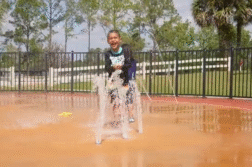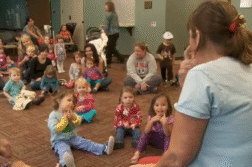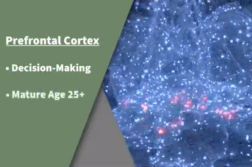DENVER, Colo. (Ivanhoe Newswire)— 38 million babies will be born in the U.S. this year. For most moms, the delivery is normal. But for some, the delivery can be complicated causing cerebral palsy, epilepsy, developmental delays and learning disabilities. But now, a technique called therapeutic hypothermia could cool babies down and prevent brain damage.
This little guy is just hours old. Rushed from the delivery room into this special crib to save his life. 15 months ago, little Adalyne was in the same bed.
“I had an emergency c-section and then Adalyne was born not breathing. Instead of hearing the happy sounds of a baby crying, we heard them starting CPR on our daughter,” recalled Adalyne’s mom, Amanda Burgie.
Neither Adalyne nor this baby received enough oxygen and blood supply to their brains during delivery.
Katharine Meddles, MD, pediatric neurologist at Rocky Mountain Hospital for Children explained, “With cooling, we now have the ability to further reduce the damage.”
Pediatric neurologist Katherine Meddles says neonatologists preform therapeutic hypothermia on newborns.
Within six hours of a baby’s birth, they are placed on a water-filled blanket to lower their core temperature to 92 degrees Fahrenheit, slowing the brain’s metabolism, decreasing the chance of tissue damage and brain injury.
“Cooling seems to interrupt that process,” clarified Dr. Meddles.
Newborns stay in this bed for 72 hours and then their bodies are slowly brought back up to 97.5 degrees. The cooling can’t reverse damage to cells already injured, but it can stop new damage.
“You could go from perhaps having a risk of mild cerebral palsy to potentially having a normal outcome,” Dr. Meddles added.
As for Adalyne, she is quickly surpassing all goals for her age group. In fact, she is exceptional, if you ask her mom!
“She’s walking, happy, smiling, chatting, she’s our little miracle,” Burgie shared.
There is a risk of bleeding and also lung problems. So, babies using the cooling bed are monitored around the clock. The children are then followed for two years by a team of physicians, seeing them every other month for the first few months, then every six months after that.
Contributors to this news report include: Cyndy McGrath, Executive Producer; Marsha Lewis, Field Producer; Rusty Reed, Videographer; Roque Correa, Editor.
To receive a free weekly e-mail on Medical Breakthroughs from Ivanhoe, sign up at: http://www.ivanhoe.com/ftk
MEDICAL BREAKTHROUGHS
RESEARCH SUMMARY
TOPIC: THERAPEUTIC HYPOTHERMIA SAVES NEWBORNS LIKE ADALYNE
REPORT: MB #4778
BACKGROUND: Therapeutic hypothermia is a type of treatment with proven neuroprotective effects in global cerebral ischemia. Prerequisites for hypothermal include cardiac arrest and neonatal asphyxia. The two main types of therapeutic hypothermia are surface and endovascular cooling. Cooling should begin as soon as it is indicated for maximum neuroprotection and edema blocking effect. Therapeutic hypothermia has proven to improve neurologic outcome and decreases mortality in patients. For effective treatment, optimal induction methods and rewarming methods are still being extensively studied.
(Source: https://www.ncbi.nlm.nih.gov/pmc/articles/PMC3519955/)
NEWBORNS: Surface cooling has been regarded as an effective intervention measure to decrease risk of adverse neurological outcomes for perinatal asphyxia newborn patients. There is a strict indication criterion for cooling and care is taken not to overheat infants before introducing them to cooling. Cooling involves lowering a patient’s core temperature to between 33.0 and 34.0°C. Cooling continues for a 72- hour period before careful rewarming. Some more severe patients may require earlier rewarming. Infants do not need to be ventilated or intubated during cooling and should only be assessed on an individual basis. Cold is a noxious stimulus, during cooling, patients may begiven a morphine infusion to keep them comfortable.
(Source: https://www.starship.org.nz/guidelines/cooling-therapeutic-hypothermia-in-the-neonate/)
COOLING BENEFITS: Katherine Meddles, MD a pediatric neurologist says, “We put electrodes on the top of their head over the scalp and monitor their electrical activity, the brainwave activity of their brain. We’re looking, in particular, for seizures because babies who’ve had a difficult delivery are at high risk for having seizures in that time period. And that way we can treat the seizures and try to minimize any further injury that might come from uncontrolled seizures.” Cooling cannot reverse damage already done but is used to help interrupt the destructive process. Cooling can help to prevent cerebral palsy, epilepsy, developmental delays, learning disabilities and neonatal encephalopathy. Neonatal encephalopathy occurs in 1.5 per 1,000 livebirths. About 15 to 20 percent of affected newborns die in the postnatal period and an additional 25 percent will sustain childhood disabilities. Six randomized clinical trials of induced therapeutic hypothermia at 33 to 34°C for 72 hours showed a decrease in mortality and disability up to two years old and this neuroprotection continues further into childhood.
(Source: Katherine Meddles, MD Pediatric Neurologist, Rocky Mountain Hospital for Children, https://www.ncbi.nlm.nih.gov/pmc/articles/PMC5953210/#R1)
FOR MORE INFORMATION ON THIS REPORT, PLEASE CONTACT:
MARI ABRAMS
HEALTHONE’S ROCKY MOUNTAIN HOSPITAL FOR CHILDREN
(720) 754-4287
MARI.ABRAMS@HEALTHONECARES.COM
If this story or any other Ivanhoe story has impacted your life or prompted you or someone you know to seek or change treatments, please let us know by contacting Marjorie Bekaert Thomas at mthomas@ivanhoe.com




